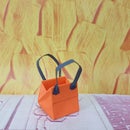Introduction: Coding With Tinkercad 3D
Identifying the basic solids that make up the object and creating a computer program using variables for control points and count-controlled loops.
In this project, we will use Codeblocks and develop algorithms for the typical geometries of architecture and make a rose window, a characteristic element of medieval architecture. (.STL file attached)
Supplies
Computer mice, 3D printer, and filaments for printing(optional)
Step 1: Login or Sign In
Open Tinkercad.com and log in to your account or sign up if you are new.





